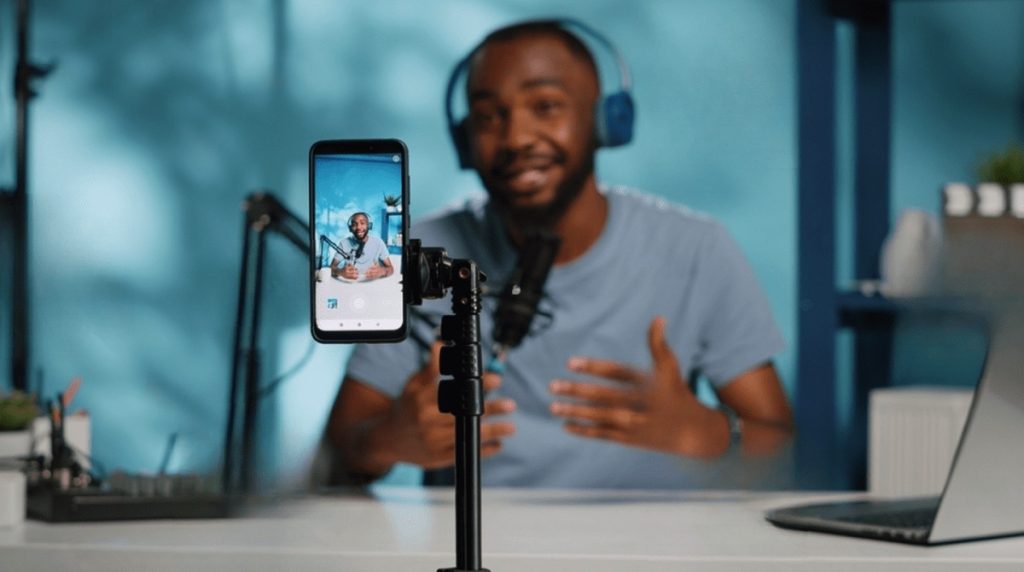We’ve seen considerable changes in how we use social media over 2024. With the unprecedented rise in short-form content through platforms like TikTok, users leaving X (formally Twitter) and the introduction of Threads and Bluesky as well as LinkedIn reporting ‘record engagement’, 2025 is set to be a huge year for small businesses on social media.
According to a 2022 survey by Visual Objects, over 70% of companies advertise across social media. Unsurprisingly, Facebook is the most popular platform for small brands. However, many have seen massive growth through spaces like TikTok, which has seen a 17% increase in users across 2023. So, how can your small business capitalise on social media marketing?
1. Short-form video will continue to grow.
Short, easy-to-digest and engaging videos will continue to thrive on platforms like TikTok, YouTube Shorts, and Instagram Reels. HubSpot’s Marketing Report has found that over 90% of marketers plan to increase their investment in short-form videos.
So, how can your small business capitalise on short-form video trends? When crafting short-form videos, remember that TikTok’s data suggests that 41% of users say that “lifting their spirits’ is key to them making a purchase.” With this in mind, positive, humorous and light videos will always go down well with TikTok’s Gen Z audience.
Outside of humour, users also value community-led content. So, lean into the specificity through layered targeting that makes online communities special. This means that instead of talking directly to #Millennials, for example, speak to #FreelanceMillennials.

2. Micro-influencers and nano-influencers are key to community success.
Influencer content has dominated social media marketing strategies for years, but brands are moving away from the traditional influencer and focusing on smaller, more engaged communities through micro-influencers. Micro-influencers tend to have 10-100K followers, while nano-influencers have around 10k followers. Not only are these influencers more cost-effective to work with, but they can also deliver some impressive results.
Brands like Glossier have an army of more than 500 ambassadors, mostly nano-influencers with highly engaged followings. And they’re not alone; brands like Mejuri, Audible, and AirBnB have seen incredible results from working with smaller niche influencers who create hyper-specific content that resonates with their audience.
With this in mind, if you’re considering an influencer campaign, it’s worth exploring smaller influencers who have built passionate communities rather than just looking at a follower count.

3. Social shopping will only grow in 2025.
By the end of 2023, it’s estimated that global sales through social media channels (TikTok Shop, Facebook, Pinterest and Instagram) will reach $1.298 billion. For content-hungry users, this means they can see how a product works and make a purchase without having to leave the app.
So, how can you use social commerce as part of your small business advertising strategy? Crafting short-form content about your products and selling through TikTok Shop can allow you to advertise and create sales at the same time. And with nearly half of us shopping through social commerce, there’s never been a better time to invest.

4. User-generated content (UGC) is still powerful.
UGC is content created by your customers or users. A recent report found that visitors who interact with UGC in some way convert at a rate 102.4% higher than average; it’s worth adding to your 2025 strategy. It also has the benefit of plugging a gap for small businesses struggling to produce the content stream required to stay consistent on social platforms. But how do you encourage UGC?
Hashtag trends, like Lululemon’s #TheSweatLife campaign, encourage customers to share photos of themselves actively engaged in workouts while wearing their clothing. The campaign allowed Lululemon to demonstrate how you can use their clothing in various activities and delivered a raft of content for them to reshare.
Outside of hashtag trends, partnering with influencers, running giveaways and resharing customer photos can encourage a spike in UGC for your small business.

5. Augmented reality (AR) will be more critical than ever.
While AR has come a long way from the Snapchat dog filter, social media is awash with AR designs. From TikTok’s ‘what book should you read next’ filter to the ability to try on glasses from your bedroom on Instagram, AR is becoming more and more influential for younger consumers. Small businesses can develop their own filters or even share their products through AR To capitalise on this trend. That allows them to generate new conversations and potential new customers.
As small to medium businesses prepare their 2025 social media strategy, it’s worth remembering that building an authentic community and having the flexibility to pivot towards new trends will always ensure engagement.
Are you looking to build a more human connection with your customers? Explore our range of services to start building new relationships across your channels.



